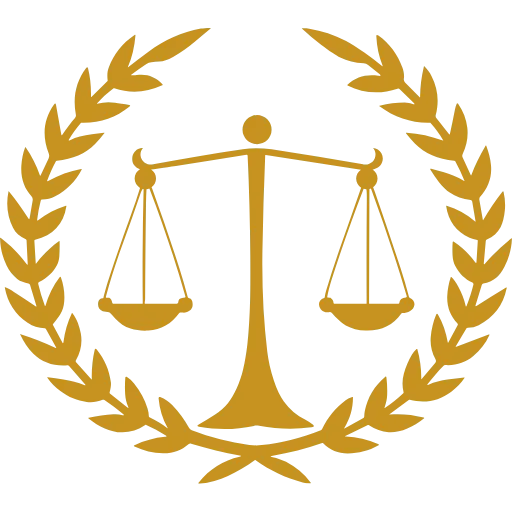T-Boned Near ASU? Why Fault Isn’t Always Obvious
T-Boned Near ASU? Why Fault Isn’t Always Obvious
It happened fast.
You were driving past ASU, maybe turning left onto University Drive or heading across Rural Road. You had the green. Then suddenly—boom. A blur of motion. The sickening crunch of metal. Your car’s spun sideways. Someone’s yelling. Your heart’s pounding. You just got T-boned.
And now you’re wondering what just happened, who was at fault, and whether that cop scribbling notes on the median is going to get it right.
If you’re in Tempe, you’re not alone. T-bone accidents are among the most common—and most contested—crashes near Arizona State University. And they’re often more complicated than they seem.
If you’ve been injured, get clarity now by speaking with a Tempe T-bone accident lawyer near ASU. Because in a side-impact crash, the story can twist just as fast as the impact did.
“I Had the Green Light!” Isn’t Always Enough
It’s a common belief: if you were going straight and someone hit you from the side, they’re automatically at fault. But here’s what really happens when claims are filed.
The other driver may say you ran the light. They’ll claim they had the green. And unless there’s hard proof—video, witnesses, data from onboard vehicle sensors—it can quickly become a he said / she said situation.
T-bone crashes near ASU often occur at intersections without protected left turns or with flashing yellow arrows. These are high-risk zones where:
Drivers misjudge oncoming speed
Visibility is poor due to turning vehicles
Students crossing the street cause sudden stops
A Downtown Tempe accident attorney knows these intersections—and how the city's accident reports, traffic cameras, and pedestrian congestion can impact fault.
Side-Impact Collisions Cause Devastating Injuries
Rear-end crashes often result in soft tissue injuries. But T-bone crashes? The impact comes at door-level, where there’s far less protection between your body and the force of another vehicle.
Common T-bone injuries include:
Rib fractures
Pelvic and hip trauma
Spinal cord compression
Internal bleeding
Head injuries from striking the side window or frame
And these aren’t always immediately visible. A Tempe spinal injury attorney often sees cases where symptoms don’t present until days later—by which point the insurance company is already trying to deny the link between crash and injury.
That’s why it’s critical to start your Tempe side-impact injury claim the right way: with medical documentation and legal backup before the narrative shifts against you.
Police Don’t Always Get It Right—and That’s a Problem
If you’ve ever read an Arizona crash report, you know they’re brief. Sometimes vague. And in cases where fault isn’t immediately obvious, officers might not assign any fault at all.
Don’t assume the report will speak for you.
Especially if you’re recovering from a TBI or were transported for emergency care, you may not have been able to give your side of the story. That means the only account recorded might be the other driver’s—someone already working to dodge responsibility.
This is where a Tempe pedestrian and vehicle crash lawyer can:
Request dashcam footage from nearby drivers
Subpoena intersection camera data from tempe.gov
Interview witnesses who were missed in the initial report
Reconstruct the crash using private investigators or accident analysts
What If the Other Driver Was Speeding or Distracted?
Let’s say they did have the light. That doesn’t mean they’re free of fault.
If they were texting, distracted, or speeding through the intersection, they can still be held liable under Arizona's comparative fault system. This means both drivers can share fault—and your compensation will be reduced accordingly.
For example:
You’re found 10% at fault for not yielding in time
They’re found 90% at fault for reckless driving
Your $100,000 injury award becomes $90,000
A Tempe distracted driving accident attorney knows how to pull phone records, subpoena data, and pressure insurers to admit partial or full fault.
More about comparative fault rules? You can review the basics at azcourts.gov.
What If the Driver Was Under the Influence?
The area around ASU is notorious for late-night traffic accidents—especially DUI-related ones. If the driver who hit you was under the influence, a Tempe DUI accident lawyer can help coordinate with prosecutors and investigators to tie the criminal case to your civil injury claim.
That means:
Access to toxicology reports
Fast-tracked fault determination
Enhanced damages if gross negligence is proven
Even if charges aren’t filed, your attorney can still pursue the claim as a civil matter, where the burden of proof is lower.
Students, Bicycles, and Insurance Gaps Near ASU
Many T-bone crashes involve ASU students—either as drivers or injured parties. Some are uninsured. Others are driving someone else’s vehicle. Some are on bikes or scooters.
If you were hit by a driver without insurance, or while you were biking near campus, you may still have coverage options:
UM/UIM under your own policy
MedPay benefits
Third-party liability (e.g., employer-owned or rideshare vehicles)
Unsure what’s covered? A Tempe uninsured driver attorney can help you pull your policy and identify hidden coverage options—even if you were a passenger or pedestrian.
Still exploring your legal rights? Check az.gov for Arizona driver resources, or skip the guesswork and speak with someone who’s already handled dozens of ASU-area crashes.
You Can Feel Fine and Still Be Seriously Injured
Whiplash. Hip strain. Spinal inflammation. You might feel “okay” walking away from a T-bone—but your body could be hiding injuries that show up a few days later.
Don’t wait to get help. And don’t wait to talk to a lawyer.
Get your case evaluated by a Tempe car accident attorney for T-bone crashes near ASU who understands:
Tempe PD procedures
Dangerous intersections
Student insurance complications
How to prove fault when both sides claim the green light
Even if you’re just “checking your options,” the difference between waiting and acting could mean tens of thousands in lost compensation—or missing the claim window entirely.
